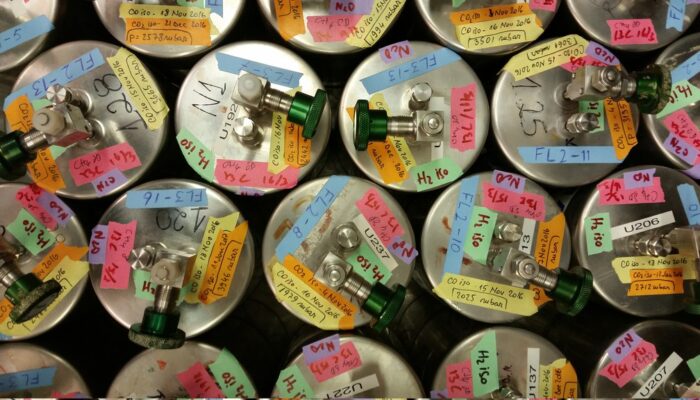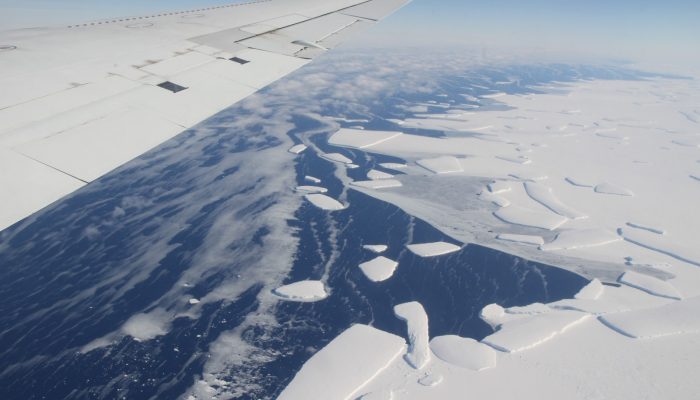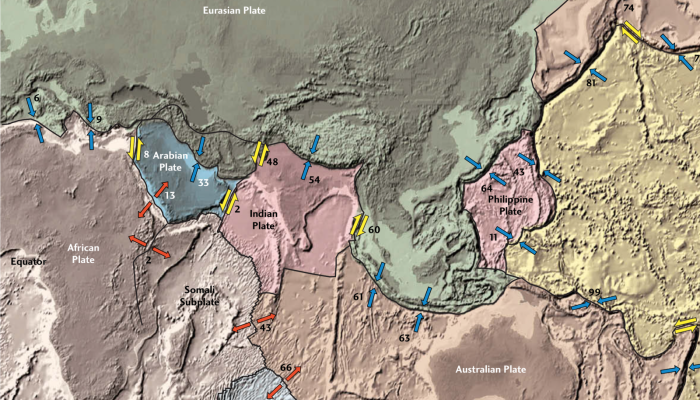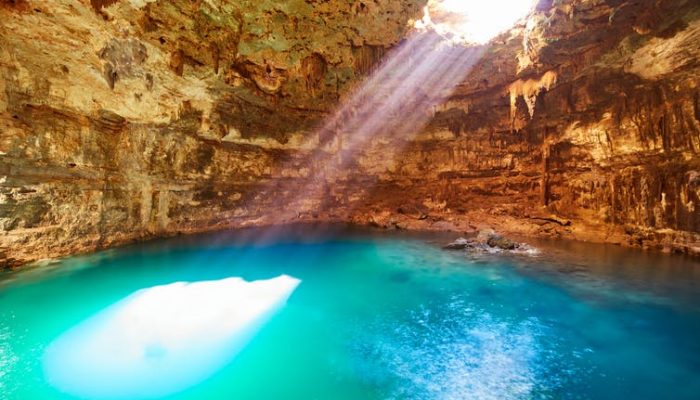Science and innovation are a central priority for the European Union with the current research framework, Horizon 2020, allocating almost €80 billion to research and innovation over seven years, until 2021. It appears that policymakers are currently happy with this investment as they are looking to increase research and innovation spending to at least €100 billion in the next research funding fram ...[Read More]
GeoLog
Imaggeo on Mondays: Air samples from afar
I’ve taken many photos on fieldwork, everywhere from Malaysia to Antarctica but this particular photo was taken in my ‘home’ lab at the University of East Anglia (UEA) in Norwich, UK. Atmospheric scientists collect air samples canisters such as these from around the world: from high altitude research aircraft (such as the Geophysica), long-term measurement time series (such as Ca ...[Read More]
Cryospheric Sciences
Image of the Week – When “Ice, Ice Baby” puts rocks “Under Pressure”
Bowie and Queen said it first, and Vanilla Ice brought it back. But now, I’ve set out to quantify it: Pressure. Rocks in glacial landscapes can experience many different kinds of pressure (forces), from sources like regional tectonics or even the weight of the glacier itself. Our hypothesis is that smaller-scale pressures, caused by the formation of ice in small bedrock cracks (frost-weathering), ...[Read More]
GeoLog
Geosciences Column: Scientists pinpoint where seawater could be leaking into Antarctic ice shelves
Over the last few decades, Antarctic ice shelves have been disintegrating at a rapid rate, likely due to warming atmospheric and ocean temperatures, according to scientists. New research reveals that one type of threat to ice shelf stability might be more widespread that previously thought. A study recently published in EGU’s open access journal The Cryosphere identified several regions in Antarct ...[Read More]
GeoLog
EGU 2019 General Assembly programme is now online!
The EGU General Assembly 2019 programme is available here. Take a look and – if you haven’t already – register for the conference by 28 February to make the early registration rates! This year’s scientific programme of the General Assemby includes Union-wide Sessions, such as the medal lectures, great debates, short courses, education and outreach sessions, as well as townhall and splinter meeting ...[Read More]
Tectonics and Structural Geology
Meeting Plate Tectonics – Roger Buck
These blogposts present interviews with outstanding scientists that bloomed and shape the theory that revolutionised Earth Sciences — Plate Tectonics. Get to know them, learn from their experience, discover the pieces of advice they share and find out where the newest challenges lie! Meeting Roger Buck Roger Buck is a Research Professor at the Lamont-Doherty Earth Observatory at Columbia Universit ...[Read More]
Natural Hazards
Job matchmaking in the water sector
Sooner or later in your career, you have turned lunch breaks, entire weekends or nights into a job search. Looking for a job can be like dating: it can either be an easy going match, quickly finding the right job position for you, or it might be a long and unsatisfying search over millions of websites. The climax arises if you want to use your past research expertise into something new, a multidis ...[Read More]
WaterUnderground
Water: underground source for billions could take more than a century to respond fully to climate change
WaterUnderground post by Mark O. Cuthbert, Cardiff University; Kevin M. Befus, University of Wyoming, and Tom Gleeson, University of Victoria Groundwater is the biggest store of accessible freshwater in the world, providing billions of people with water for drinking and crop irrigation. That’s all despite the fact that most will never see groundwater at its source – it’s stored naturally below gro ...[Read More]
GeoLog
Imaggeo on Mondays: The changing landscape of Patagonia
Pictured here is a snapshot of an environment in transition. Today’s featured photo was taken at the foot of Monte Fitz Roy, a jagged Patagonia mountain located in Los Glaciares National Park on the border between Argentina and Chile. The Patagonia region in South America is the second biggest source of glaciers in the southern hemisphere, behind Antarctica, but the region is losing ice at a rapid ...[Read More]
Cryospheric Sciences
Image of the Week – Seven weeks in Antarctica [and how to study its surface mass balance]
After only two months of PhD at the Laboratoire de Glaciologie of the Université libre de Bruxelles (ULB, Belgium), I had the chance to participate in an ice core drilling campaign in the Princess Ragnhild coastal region, East Antarctica, during seven weeks in December 2018 – January 2019 for the Mass2Ant project. Our goal was to collect ice cores to better evaluate the evolution of the surf ...[Read More]










![Image of the Week – Seven weeks in Antarctica [and how to study its surface mass balance]](https://blogs.egu.eu/divisions/cr/wp-content/blogs.dir/17/files/2019/02/Vue_globale-700x400.jpg)